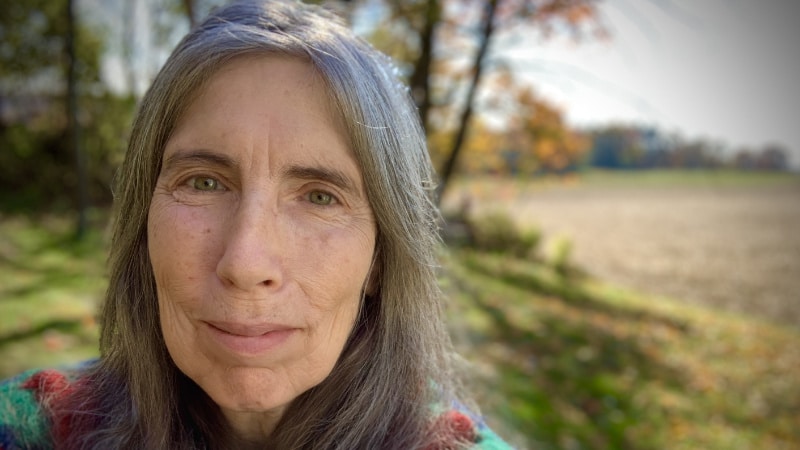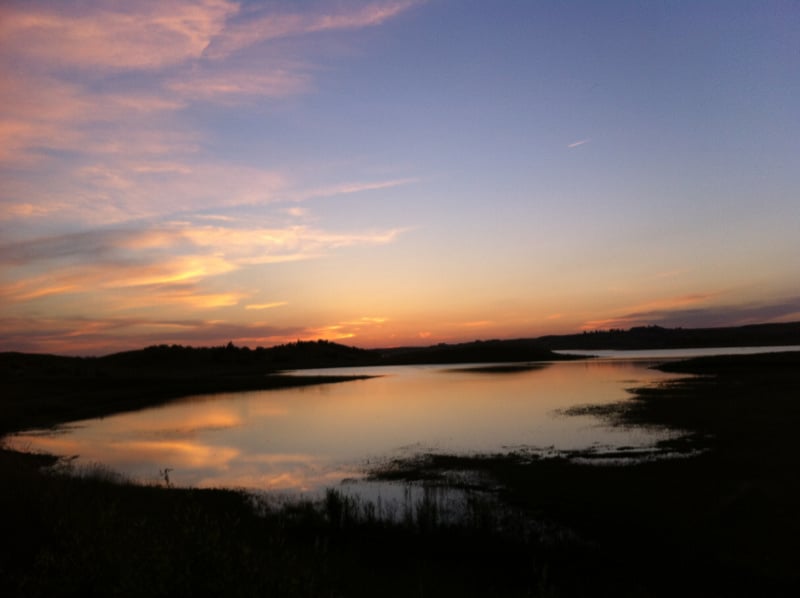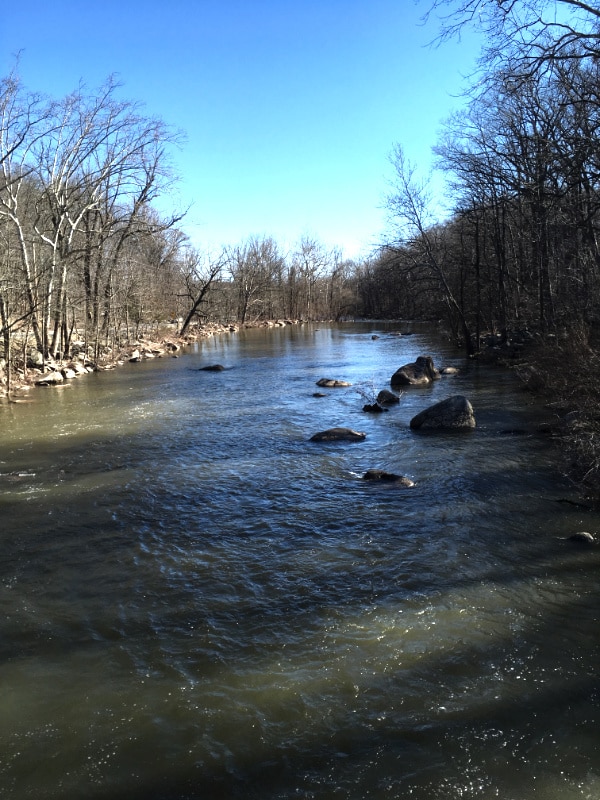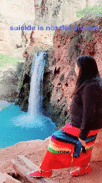This article is part of Voices H2O, a series that gives voice to the complex and sometimes competing issues surrounding our relationship with water. Stroud Water Research Center welcomes guest writer Jacqline Wolf Tice, who shares her thoughts on water in honor of Native American Heritage Month.

By Jacqline Wolf Tice
At 98 years old, my student Caroline’s mother had never turned a water faucet in her life. She was born and lived on the Navajo Nation Reservation, where many families do not have electricity and running water in the “coal mine impacted” communities. Her family has always driven seven miles to a pumping station on the reservation to haul water back to their sheep ranch.
Another student battles frontline fires exacerbated by climate change in northern California — fires that impact on average over 500,000 acres annually of reservation lands across the United States.
In northern Minnesota, the White Earth Band of Ojibwe and others have sued the Minnesota Department of Natural Resources (MDNR) on behalf of the “Rights of Nature, Rights of MANOOMIN (Wild Rice), and Rights of the Chippewa,” which are protected and reserved by treaties. Their claim cites the threats of climate change and aims to nullify an MDNR permit for 5 billion gallons of public ground and surface water granted to Enbridge for the Line 3 pipeline.
The Yurok Tribe, in an effort to protect their inherent subsistence and spiritual life in relation to the Salmon in the Klamath River, has passed an ordinance giving the river the “rights of Personhood.”

These four stories acknowledge present realities for Indigenous Peoples in this month of November 2021. Marked by the United States as a national month to celebrate and honor the histories of the first sovereign nations of its North American territory, we must understand how their lifeways were criticized and outlawed as savage, their bodies and spirits uprooted and severed by dispossession and cession of over 96% of their territories, and their populations reduced by 90% since first contact from foreign diseases and wars with colonial settler governments.
We must tell these truths. Especially, we must, in this very month when the Atlanta baseball team fans are “whooping” and “chopping” their own celebration, mocking the very war cries that led our men to their deaths to protect their grandchildren from what prophecies had revealed in visions through shapes of clouds, the rustling of trees, voices of the rippling creeks, and the eagle’s cry. Nature reveals stories and shows us through her ecosystems what is coming and what is here.

Water is life. It’s a phrase made mainstream by the Standing Rock Sioux Tribe’s resistance against the Dakota Access Pipeline. Simply stated, all organic life exists because of the interactions of hydrogen and oxygen molecules with the environment. In the cosmology of Indigenous cultures, though, “water is life” holds a deeper, ancient, implicit value beyond its mainstream context.
Tiokasin Ghosthorse explains the spirit of water, called Mni in the Lakota language, as a first consciousness. Its essential meaning is, “Water as a Being.” In Supai, Arizona, an Indigenous village at the bottom of the Grand Canyon, children are taught from birth to swim, to respect the water, that this water spirit is their protector.
Critical to understanding this perception is the knowledge that water is not only a resource to be protected by statutes, regulations, and common law. It is more like a relative, which functions as a literal and symbolic source of nurturance, revitalization, guidance, and strength. Materially and spiritually, water teaches us. It needs to be carefully monitored, listened to, and observed for changes that signal necessary adjustments to practices that ensure its continuity as a creator and sustainer of life. Just as people have a purpose, so does this sacred water. Professor Rebecca Tsosie describes the “relational ethic” of an Indigenous worldview as kinship with the natural surroundings.
As you reflect on Native American Heritage Month, ask yourself, “What are my responsibilities to nature and to water in my community?” as opposed to “What are my rights to it?”
Acknowledging, understanding, and telling the truth in this celebratory month of Native Americans/Indigenous Peoples/First Nations/American Indians means making room in your life to learn and listen to stories of nature and its First People.
Deb Haaland (Laguna Pueblo), secretary of the U.S. Department of the Interior, the primary governmental agency in relationship with tribal nations, is the first Indigenous person to hold a Presidential Cabinet role. Chuck Sams, member of the United Confederated Tribes of the Umatilla Tribes (and my former student), has been nominated by President Joe Biden to be the next head of the National Park Service.
The White Mountain Apache Tribe is reclaiming Indigenous farming methods and growing traditional foods as a way to restore sovereignty and healing for their tribal members from the diseases of diabetes and addiction.

Bernita, a Havasupai woman whose tribe resides at the bottom of the Grand Canyon since time immemorial, is pursuing her master’s degree online between the helicopter rides she must schedule to fly out of the canyon to care for her relatives with COVID-19.
These are stories of triumph and honor of the ancestral shoulders, ceremonial traditions, and sacred stories that have carried forward the legacy of Indigenous Peoples of these territories. We must also tell these truths.
To learn and support these Indigenous stories, explore this podcast on climate change and dispossession with Professor Kyle Whyte; visit the online National Museum of American Indians’ native cinema showcase; learn about the Indigenous foods revitalization movement; check out the new documentary, “GATHER,” on Netflix. Thank you for listening.
Happy Native American Heritage Month!
Jacqline Wolf Tice is an Indigenous legal scholar, graduating summa cum laude from the University of Oklahoma’s Indigenous Peoples Law program. As a nonmember, she is affiliated with both Cherokee and Mandan Hidatsa Arikara tribal communities. She is an adjunct and course manager for the University of Oklahoma College of Law and, as a cultural ecologist, writes on issues of sovereignty at the intersection of culture and the environment. She is a Penn State Extension Master Watershed Steward volunteering with the Stroud Center’s EnviroDIY water monitoring project in the Delaware Water Basin.
References
Farrell, J., et al., (2021). Effects of land dispossession and forced migration on Indigenous peoples in North America. Science Vol. 374, No. 6567. DOI: 10.1126/science.abe4943
Ghosthorse, T. (26 Aug 2016). Living with Relativity. Center for Humans & Nature. Retrieved from https://www.humansandnature.org/living-with-relativity
Greeley, J. (2017). Water in Native American spirituality: Liquid life—blood of the earth and life of the community. Green Humanities, 2, 156-179.
Manoomin v. Minnesota Department of Natural Resources, Case No. GC21-0428 (White Earth Band of Ojibwe Tribal Ct.)
Natural Solutions to Cutting Pollution and Building Resilience: U.S. House Select Committee on the Climate Crisis, 116th Cong. (2019) (Testimony of Frank Myers, Vice Chairman, Yurok Tribe. Retrieved from https://www.congress.gov/116/meeting/house/110110/witnesses/HMTG-116-CN00-Wstate-MyersF-20191022.pdf
Smith, L. (2021). Impact of the Coronavirus and Federal Responses on Indigenous Peoples’ Health, Security, and Sovereignty, AM. INDIAN L. REV. 297(45). https://digitalcommons.law.ou.edu/ailr/vol45/iss2/3
Tsosie, R. (2013). Climate Change and Indigenous Peoples: Comparative Models of Sovereignty. Tulane Environmental Law Journal, 26(2), 239-257. Retrieved from http://www.jstor.org/stable/24673668



